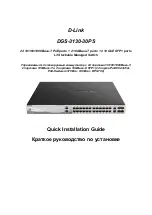
113
Complete online help
Enter a “?” character in any view on your terminal to display all the commands available in the view and
their brief descriptions. The following takes user view as an example.
<Command-Line> ?
display Display current system information
ip IP configuration commands in an interface
localuser Configure WEB user manager
ping Ping function
quit Exit from current command view
reboot Reset device
restore Restore configuration
save Save current configuration
undo Cancel current setting
Enter a command, a space, and a “?” character (instead of a keyword available in this position of the
command) on your terminal to display all the available keywords and their brief descriptions. The following
takes the
display
command as an example.
<Command-Line> display ?
ip IP status and configuration information
version System hardware and software version information
Enter a command, a space, and a “?” character (instead of an argument available in this position of the
command) on your terminal to display all the available arguments and their brief descriptions. The following
takes the
ip address
command as an example.
[Command-Line] ip address dhcp-alloc ?
<cr>
The string <cr> means no argument is available in the position occupied by the “?” character. You can
execute the command without providing any other information.
Partial online help
Enter a string followed directly by a “?” character on your terminal to display all the commands beginning
with the string. For example:
<Command-Line> p?
ping
Enter a command, a space, and a string followed by a “?” character on your terminal to display all the
keywords that belong to the command and begin with the string (if available). For example:
<Command-Line> display v?
version
Enter the first several characters of a keyword in a command and then press <Tab>. The complete keyword
will be displayed on the terminal screen if the input characters uniquely identify a keyword. All the
keywords that match the input characters will be displayed on the terminal screen if the input characters
match more than one keyword.
Command History
CLI can store the latest executed commands as history commands so that users can recall and execute them
again. By default, CLI can store 10 history commands for each user.
Table 121
lists history
command-related operations.
Summary of Contents for V1905 Series
Page 133: ...128 Index A C D F G I L M N R S ...
Page 135: ......
















































